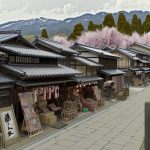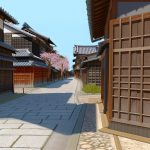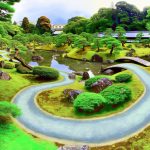Overview of Climbing Season
Mount Fuji stands as Japan’s towering icon, soaring at 3,776 meters above sea level. This majestic mountain beckons adventurers and nature enthusiasts from all corners of the globe, especially during Japan’s summer months. The official climbing season generally begins in early July and extends to early September. It is during this time that Mount Fuji becomes most accessible to hikers, offering not only a less perilous journey but also a chance to experience the scenery at its most splendid.
Weather Conditions
One of the most pivotal aspects of climbing Mount Fuji is understanding the weather conditions. The official climbing season is favored largely due to relatively moderate temperatures and significantly reduced snow cover on the trail routes. During daytime, temperatures at the summit hover around just above freezing, occasionally creeping into the mid-single digits Celsius. However, as the sun sets, temperatures plummet dramatically, making it crucial for climbers to endure cold nighttime excursions. Despite being summer, Fuji’s weather can be erratic, characterized by sudden bursts of rain or strong winds, which necessitate thorough preparations. Climbers must remain vigilant and prepared for these abrupt weather shifts.
Trails and Access
Navigating the routes to the top of Mount Fuji is an adventure in itself, with climbers having the option to choose from four primary trails: Yoshida, Subashiri, Gotemba, and Fujinomiya. Among these paths, the Yoshida Trail is the most traversed. Its popularity can be attributed to the abundance of facilities, numerous checkpoints for rest, and its strategic positioning, offering easier access from major transport hubs. More details about the Yoshida Trail and other paths can be viewed here. Each trail offers a unique blend of features, differing in length, elevation difficulty, and available amenities. It is imperative for climbers to assess their hiking capabilities and schedules when selecting a trail to ensure a safe and rewarding experience.
Permits and Fees
Ascending Mount Fuji is an alluring prospect for many; however, understanding the nuances of permits and fees is essential before embarking on the climb. Interestingly, no mandatory permit is currently required to climb Mount Fuji. Nonetheless, climbers are strongly encouraged to contribute a voluntary fee of 1,000 yen. This contribution aids in trail maintenance and supports ongoing environmental conservation initiatives. Payments can be conveniently made at the trailheads, playing a small but significant part in preserving the beauty and sanctity of Mount Fuji for future generations.
Preparation and Equipment
Preparing for a climb up Mount Fuji extends beyond physical stamina and involves meticulous planning and equipment readiness. Climbers must equip themselves with essential gear, considering the unpredictable weather patterns. Hiking boots that offer robust ankle support are a must, while warm clothing layers enable climbers to adapt to temperature changes throughout the ascent. Furthermore, rain gear is indispensable given the surprise elements of Mount Fuji’s weather. A headlamp serves as an invaluable tool, providing necessary visibility during early morning or late evening treks. Staying hydrated and energized is crucial, necessitating ample water and high-energy snacks. To minimize the effects of high altitude and prevent altitude sickness, climbers are advised to gradually acclimatize. Stopping at mountain huts—where climbers can rest or spend overnight—is an effective measure to help climbers adjust to the thinning air as they climb higher.
Safety Considerations
Safety is paramount when climbing Mount Fuji, especially given the physical demands and inherent risks associated with the climb. During the official climbing season, the paths are patrolled regularly, and mountain huts are in operation—providing essential support and amenities, thereby creating a safer environment for climbers. Staying updated on weather conditions and trail statuses is a vital safety measure that climbers must undertake both prior to and during the climb. Moreover, ensuring personal well-being by assessing one’s physical condition at various points throughout the journey is critical. Staying connected with fellow hikers and having access to emergency support via a mobile phone or radio further enhances safety measures during the climb.
The experience of ascending Mount Fuji within this designated season merges the appreciation of natural beauty with a deep cultural connection to Japan’s heritage. While the journey is physically intense, the rewards, both in terms of picturesque vistas and personal accomplishment, are enormous with appropriate preparation and foresight. Thus, a carefully planned climb can transform what might be a daunting prospect into a truly memorable adventure, offering climbers not just a challenging hike but also an opportunity to connect with a sacred site interwoven into the cultural fabric of Japan.












